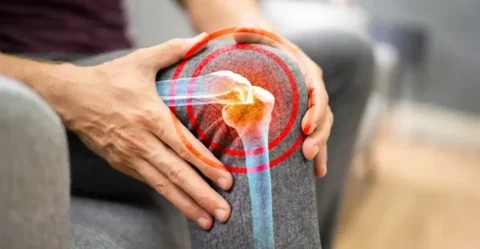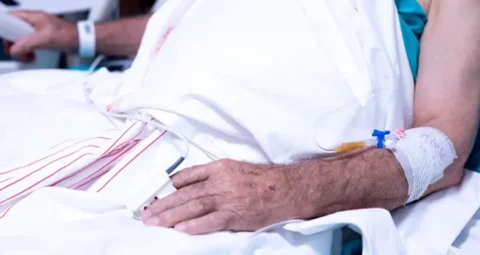Platelet-rich plasma therapy is rapidly gaining traction as a revolutionary yet simple way to treat a variety of conditions. By using the body’s own platelet concentration in PRP therapy, clinicians can replicate a variety of the body’s natural effects from boosting wound healing to encouraging cell repair and cell growth. However, the exact process for getting the plasma required is far from simple: Platelet viability will greatly rely on the PRP kit used to make the platelet concentrate, with a PRP centrifuge being critical to the process.
So what’s the best centrifuge a practice can use for PRP treatment? This will depend on the kind of platelet-rich plasma therapy that the patient requires, as well as the type of PRP kit that the practice will choose for platelet activation and platelet recovery.
Understanding PRP Centrifuges
Given the wide variety of PRP centrifuges available for use, it can be difficult to decide on the “best” type of PRP centrifuge to use for PRP therapy without extensive experience and understanding of what a patient needs. The most reliable way of knowing the best kind of PRP centrifuge to use will largely rely on the practice’s own experience and the results from their treatments, though some essentials should always be accounted for.
A PRP centrifuge is necessary for separating the different cell types from the concentrated platelets needed for platelet-rich plasma. While any PRP medical device can technically use centrifugation to obtain a plasma sample with a high platelet count, it’s platelet concentration that will ultimately end up deciding the efficacy of an autologous PRP treatment.
There are three kinds of PRP kits a laboratory can use to get platelet concentrate:
1. Gel Separator System
The gel separator system uses osmosis to make sure that the platelet concentrate gets captured in a gel layer separated from the white blood cells and the red blood cells. The platelet count for this kind of centrifuge system will be lower than other systems, but it’s also one of the most effective ways to end up with a plasma that has a lower leukocyte count.
2. Buffy Coat System
Kits that use a buffy coat trap the white blood cells and platelets in a layer above the separated red blood cell layer in the final sample. This centrifugation makes it easy for a laboratory to end up with a sample with a high platelet count, though the buffy coat traps white blood cells for a considerable leukocyte count as well.
3. Double Spin Buffy Coat System
Increasing the centrifugation allows for better filtering of other cell types away from the final sample, which increases both platelet recovery and platelet viability in the concentrated PRP sample. Adding a double spin to the buffy coat system allows for a PRP sample made of almost pure concentrated platelets which stay in a plasma layer that can easily be removed from the gathered red blood cell layers beneath.
While it’s technically possible for a laboratory centrifuge to replicate the same centrifugal force required to separate stem cell, blood cell, and other cell types from concentrated platelets, only a proper PRP kit has the centrifugation necessary for proper PRP preparation. Attempting to use a laboratory centrifuge will only yield platelet-poor plasma — still possible to use for autologous platelet treatment, but with diminished results.
Two Different Types of Autologous Platelet-Rich Plasma Therapy
Recent innovations in autologous PRP treatment have made PRP preparation an even more crucial component with the results of PRP therapy. One of these developments is the invention of platelet-rich fibrin matrix treatments which are designed to take advantage of the stem cell count found in autologous platelet-rich plasma for better results for the patient.
This has effectively given patients two kinds of PRP therapies to choose from, each with its own interactions with the centrifugation process in a PRP kit:
1. PRP Therapy
Traditional PRP therapy requires a high platelet recovery and platelet viability rate since the plasma layer used in the platelet activation is almost pure PRP. For this reason, a centrifuge that can remove white blood cells and other cell types from the final PRP sample is the best option for practices to use.
2. PRFM Therapy
PRFM treatment adds stem cell and fibrin to the PRP sample obtained in a centrifuge, which has the added effect of making the treatment stick around the patient’s body longer compared to normal PRP therapy. It’s a more advanced version of PRP therapy that leverages the other building blocks in the blood for even better results, though the overall process can be more difficult.
Learn more: Prp Vs. Prfm: What’s the Difference?
PEP Factor: An Alternative for Platelet-Rich Plasma Therapy
Due to the difficulty in sourcing a reliable PRP centrifuge and the overall differences found in every PRP kit, not all cosmetic practices will use PRP injection as part of their suite of services. In these cases, PEP Factor products are an excellent alternative that can still make use of growth factor compounds to manage issues like hair growth.
PEP Factor products contain a proprietary mixture of fibroblast growth factor and copper peptide to reinvigorate hair and cell growth. Unlike concentrated PRP treatment, it doesn’t require any injections or blood drawn to work. All the patient has to do is apply the formula directly on their scalp and the growth factor will do the rest.
While it can’t completely replicate the full benefits of a pure PRP treatment, it can help improve hair density and reduce the appearance of hair thinning. It can also potentially help rejuvenate dormant hair cells on the head, especially when combined with light therapy. PEP Factor products can also be used as a complementary treatment to a PRP injection, especially if the patient wants to increase the efficacy of their results.
Get High-Quality and Affordable Medical Tools and Supplies From FACE Medical Supply Today
With the different kinds of PRP centrifuge available on the market, getting the best PRP kit can make PRP preparation easier for more effective results. Getting a PRP kit that can give you a pure PRP sample is the best way to make sure that your concentrated PRP is usable for PRP therapy, though keep in mind that the efficacy of a PRP system will depend on the centrifugation process used to get the ideal amount of platelet concentration.
FACE Medical Supply has years of experience in providing clinics and practices with essential tools and supplies for medical procedures like PRP injection. We pride ourselves on our customer service and commitment to product quality, at competitive prices so practices don’t need to worry about their bottom line.
For more information about us and our stocks, contact us today.






